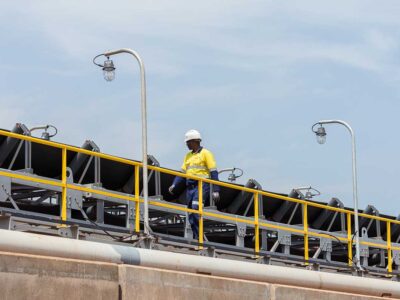Cases of prostate cancer, which is strongly tied to ageing, are expected to rise in the UAE in the coming years as demographics shift towards an older population, doctors told Arabian Business, calling for more screening this Movember.
These cases may well increase within the next 30 years as the UAE’s population demographics continue to shift. Currently, the UAE is home to over 9.5 million people with a median age of 33.5 years, though new visa initiatives are attracting residents across a wider age range.
“The number of prostate cancer cases is expected to increase over the next 20 to 30 years due to a growing population and shifting demographics, such as the influx of expatriates, particularly with initiatives like the golden visa,” said Dr. Hassan Jaafar, a consultant medical oncologist at Burjeel Medical City.
Prostate cancer is the second-most common cancer, according to the American Cancer Scoiety, and it is typically more prevalent in older men aged 70 to 75. Around 95 percent of patients are over 50 years old. At diagnosis, the median age is around 65, which indicates a strong association between age and incidence, Dr. Fathima Nubla, family medicine specialist at Abu Dhabi’s LLH Medical Centre, told Arabian Business.
Projections suggest that the UAE population could reach over 10.6 million by 2030, adding to the country’s future prostate cancer burden as more long-term residents face higher risk levels that come with ageing.
November, commonly referred to as Movember, is prostate cancer awareness month, and doctors across the UAE are mobilising to raise awareness on the disease as incidence continues to rise globally and the UAE’s population is not getting any younger.
Lack of regular screening leads to late stage diagnoses in UAE
In addition to raising population age, doctors note a concerning trend of late-stage diagnoses in the UAE compared to other countries.
“We find that the notable issue is the higher proportion of advanced cases in our region, which contributes to higher mortality rates,” said Jaafar.
He explained this is largely due to a lack of widespread screening programs. “Screening is a crucial tool for early cancer detection,” he remarked, adding that many cancers can be indolent if detected early.
A clinical evaluation of prostate pathology often entails a digital rectal examination, prostate-specific antigen test, and imaging in the form of ultrasonography or multi-parametric MRI. Depending on the results from the initial evaluation, further investigations like blood/urine biomarkers, prostate-specific membrane antigen PET scans, and targeted prostate biopsy can be done for a detailed work-up.
“Prostate cancer is a slow-growing cancer, so by the time patients present with symptoms, the disease is usually advanced. If you can detect prostate cancer on a routine screening, the progress is much better,” added Nubla.
It is widely believed that men are less likely to go for check-ups or take care of their health compared to women. Which is why doctors face barriers in encouraging them to get screened more often.
“It is important to have a well-established screening program, reaching out to individuals aged 55 or above, and encouraging them to undergo PSA testing,” said Jaafar.
“Health education and awareness at the community level is the most effective way to facilitate screening. Next comes identifying barriers to screening and designing a barrier-specific resolution,” said Dr. Shantan Tyagi, a urology specialist at Medeor Hospital Dubai.
Aside from public advertisements and incentivisation, he suggested that clinics take into account barriers such as inconvenient clinic hours, limited capacity follow-up on abnormal results, patient anxiety, cost of treatment, and lack of transportation.
Tyagi recommends high-risk men have their first PSA testing between age 45 and 50.
Nubla also stressed the importance of raising awareness, especially because prostate cancer does not present any specific symptoms. “We should take this as an opportunity to make our patients more aware of the cancer screening programs and the significance of early detection,” she said.
“Symptoms can overlap with [those] of benign prostate hypertrophy, which are increased urinary frequency, interrupted urinary flow, incomplete voiding sensation, painful urination, and blood in urine.”
Jaafar agreed that leveraging public health outreach is essential. “It is important to have a well-established screening program, reaching out to individuals aged 55 or above, and encouraging them to undergo PSA testing,” he noted.
With awareness growing among at-risk communities each Movember, the medical community hopes more men will get involved to better address the UAE’s future prostate cancer burden.









